Learning Outcomes
After this course learners will be able to:
- Describe how SmartCompress technology can control compression in speech-in-noise environments and control gain in non-speech environments.
- Explain how to manage acoustic feedback with the Adaptive Feedback Canceller Pro in Sonic Trek hearing aids.
- Describe all the available features and technology in Sonic’s Trek Super Power and Ultra Power hearing aids.
Introducing Trek
My name is Erin Reichert and I am the Director of Professional Services at Sonic. Thank you so much for joining me today as we kick off our newest Super Power and Ultra Power offerings known as Trek. If you have participated in any courses over the last several years, you will be familiar with Sonic's 4S Foundation. Sonic is dedicated to improving lives through enhanced hearing by constantly focusing on:
- Sound that’s natural
- Speech understanding in noise
- Simplicity in all we do
- Style that stands out
Styles and Fitting Ranges
Trek is the most powerful hearing aid product family built on our Sonic SoundDNA Technology Platform. We have two different styles, as shown in Figure 1. The instrument on the left is our BTE Super Power (SP), and on the right is our BTE Ultra Power (UP). We also offer two different technology levels. Level 80 is our advanced level technology, and Level 40 is our basic level technology. The Trek Ultra Power is 4.4 mm bigger than the Trek Super Power. These instruments both offer 2.4 GHz Bluetooth low energy protocol as well as our Near Field Magnetic Induction (NFMI) system. Both instruments offer telecoil, which is important for this population, as well as LED indicators and connectivity solutions. In addition, this instrument is pediatric friendly.
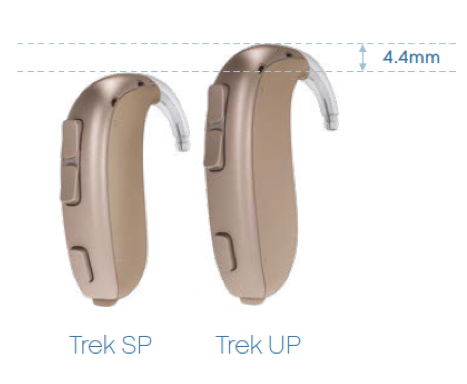
Figure 1. Trek styles: Super Power and Ultra Power.
Figure 2 shows the fitting ranges for the Trek80 and Trek40, Super Power and Ultra Power, as well as the specs for each product.
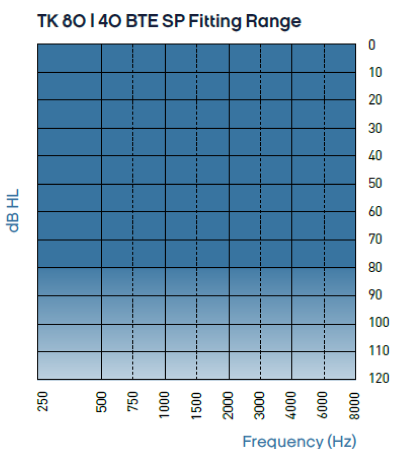
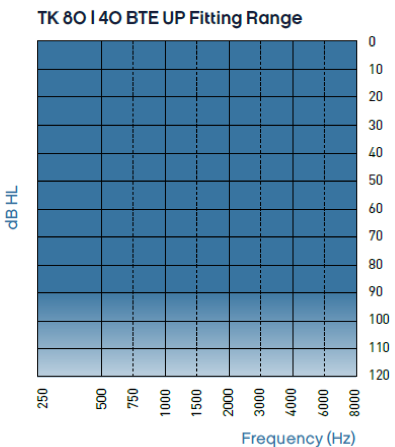

Figure 2. Fitting Ranges and specs for Trek SP (80 and 40) and Trek UP (80 and 40).
Please note that special care should be taken when fitting and using a hearing instrument with maximum sound pressure capability in excess of 132 dB SPL (IEC 60318-4) since there may be a risk of impairing the remaining hearing of the hearing instrument user. One tip to keep in mind is that whoever your vendor is for all of your tubing supplies, you can purchase filters from them to put into your listening tube to make sure that is a safe level for your listening activity.
Patient Demographics
Let's talk about the characteristics of the population of hearing instrument wearers who are using our Super Power and Ultra Power products. Interestingly, only an estimated 5-10% of all hearing-impaired users are in the profound category. An estimated 700,000 to 1.4 million power instruments are sold per year, based on 14 million units a year sold globally (Taylor, 2009). This demographic represents a very small percentage of the overall population of hearing impaired wearers.
With Trek, Sonic's most powerful hearing instrument, profound users are able to experience more of the world around them. These users have a fundamental need for amplification. Trek helps users embrace conversation, connections, and sound experiences of everyday life with optimizing volume and clarity with greater precision. With Trek, patients will experience more. It's our newest solution to help patients with severe to profound hearing loss break barriers and embrace new experiences.
Trek optimizes volume and clarity with more precision so patients can engage in more conversations, connections, and experiences. Built on our Sonic SoundDNA Platform, Trek delivers natural sound while controlling environmental noise at the same time. With advanced connectivity, reliability, and style, Trek gives users the confidence they need to experience more of everyday life.
We will now view a brief video that highlights all the features of Trek.
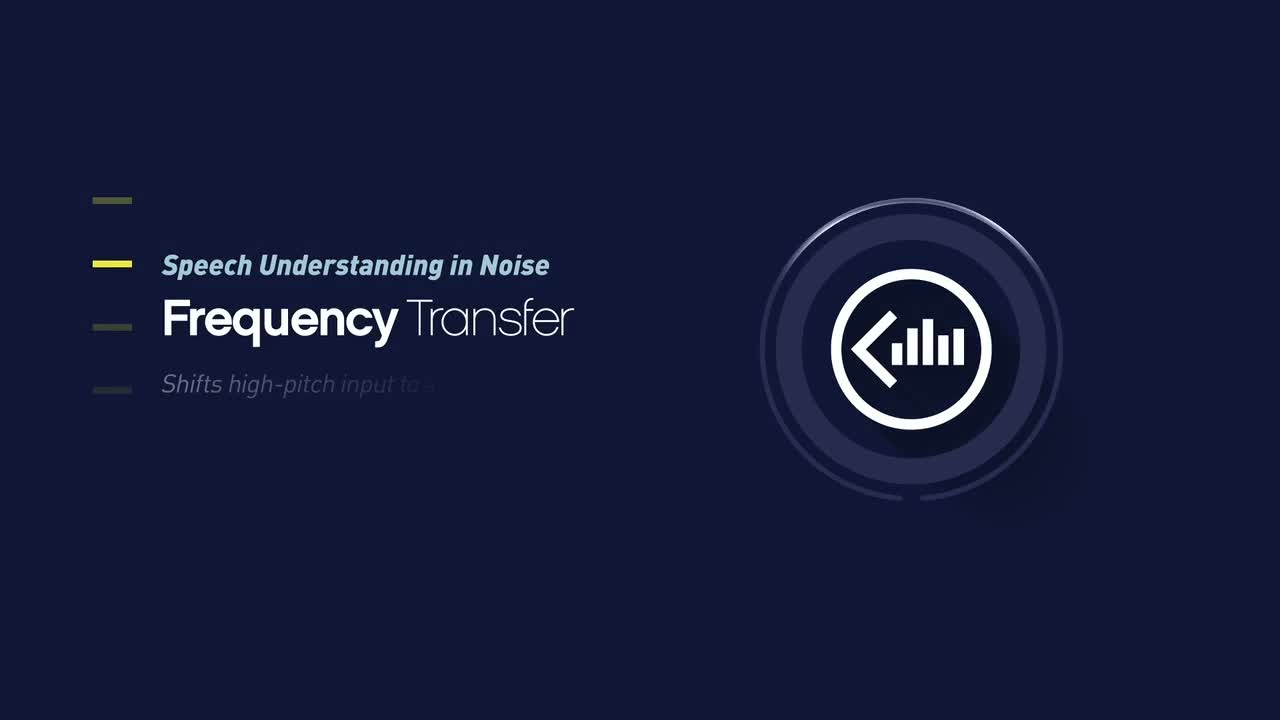
[Video Narration] For people with severe to profound hearing loss, Sonic has developed Trek, our most powerful hearing instruments. Because these patients face greater auditory challenges than most, Trek helps them break through barriers to experience more of the conversations, connections, and sounds of everyday life. Trek, experience more. Trek Super Power and Ultra Power are based on our 4S Foundation: sound that's natural, speech understanding in noise, simplicity in all we do, and style that stands out.
As the most powerful BTE hearing aids ever built on the Sonic SoundDNA Platform, Trek's natural sound quality depends on Speech Variable Processing with SmartCompress to clarify speech in changing listening environments. SmartCompress further processes the amplified signal to offer more listening comfort in noise as listening environments change without compromising sound quality.
Adaptive Feedback Canceller Pro eliminates feedback automatically, providing a better target match for improved audibility of soft speech sounds. To improve speech understanding in different noisy environments, Speech in Noise Management recognizes and highlights conversations, keeping distracting sounds to a minimum. There are settings to reduce background noise at different SNR levels and personalization for patient preferences.
Frequency Transfer makes speech cues more audible by shifting high-pitch input to a lower frequency range that patients can hear. And for patients who also suffer from tinnitus, a built-in system of broadband and nature sounds can help to provide temporary relief from this persistent distraction.
A welcome advantage for this population is Trek's Volume Control Step Size. Volume adjustments in one-decibel increments instead of 2.5 decibels provider finer, more precise control in smaller steps.
Trek offers more connections in more places with 2.4 GHz, Bluetooth Low Energy wireless, built-in telecoil, and DAI/FM compatibility. Users can connect easily to a vast array of music and entertainment through smartphones, smart devices, and a variety of easy-to-use accessories, apps, and adapters, and each device is engineered to the IP68 standard against dust, sweat, and moisture.
Trek is available in two performance levels and in a variety of attractive colors from classic to stylish. For people with severe to profound hearing loss, Trek can help them experience more: more volume and clarity with greater precision. To explore all the benefits of Trek, go to sonici.com and set up a product demonstration today. With Sonic, everyday sounds better.
Sound That's Natural
The SoundDNA platform from Sonic brings together our most powerful, automatic, adaptive and flexible hearing aid technologies. Built into our products for patients with severe to profound hearing loss, Trek offers the benefits of the Sonic 4S Foundation. In this next section, we'll discuss our features that produce natural sound, giving our users more power, control and access to everyday sounds.
With Trek, we deliver natural sound quality to our end users via several different technologies:
- Speech Variable Processing (SVP) with SmartCompress
- Adaptive Feedback Canceller Pro (AFC Pro)
- Frequency Transfer
- Extended Dynamic Range
- SmartMusic
Speech Variable Processing (SVP)
As Sonic's most powerful hearing aid offering for gain and output, Trek provides robust sound amplification for those with severe to profound hearing loss. Our unique digital signal processing strategy ensures the sound is clear and natural. Speech Variable Processing achieves this by addressing the need for optimum time and frequency resolution. SVP measures and applies gain to wideband acoustic signal without breaking the input into channels. It also provides two selectable amplification strategies, important for the individual needs of this population of users. Phoneme Focus and Envelope Focus are two different strategies that you are able to select within the EXPRESSfit Pro fitting system software. The defaults will be selected based on a variety of factors, but again, you can adjust them as needed.
Phoneme Focus offers maximum audibility of all the fine details of speech signals, rapidly adjusting the gain to apply the precise amount of amplification for each phoneme. Envelope Focus is designed to support patients who rely on information from the speech envelope, applying less alteration to the amplification of the speech signal, preserving the envelope for greater contrast between phonemes.
SmartCompress
As the signal to noise ratio (SNR) of listening environments changes from one moment to the next, Trek80 further optimizes SVP with SmartCompress, the breakthrough, adaptive compression system from Sonic SoundDNA. SmartCompress is designed for complex, challenging listening environments. This feature accurately detects the short- and long-term SNR in changing listening environments in order to overcome the challenges of traditional compression in noise. It is a completely configurable adaptive compression system, which is one main reason to upsell the features in Trek80 over the Trek40.
Most competitor digital sound processors (DSPs) are developed for quiet environments. However, our patients are often in very noisy environments. SmartCompress is an effective solution that specifically addresses the problem of applying compression in noise. In addition, SmartCompress is adaptive and it overcomes the limitations of a fixed environment classification system. It complements SVP, directionality and noise reduction. You can select any fitting rationale of your choice and SmartCompress will deliver the most optimal solution for your end-user.
How does SmartCompress work? SmartCompress helps to improve the quality of sound coming out of the device (i.e. the output SNR), by limiting the amplification of noise following short pauses in speech, or even between speech phonemes. In environments without speech, it applies less amplification to the incoming signal. The resulting clearer, cleaner, amplified signal offers many listener benefits, such as listening comfort in noise, improved ease of communication and overall natural sound quality.
In Figure 3, you can see that SmartCompress is using two SNR level estimators. The green represents the fast phonemic estimator and shown in blue is the slow long-term estimator. Both of these systems are working together, providing accurate measurement of environmental changes in a real-time system.

Figure 3. SmartCompress uses two SNR level estimators.
SmartCompress controls the compression in speech in noise by adaptively varying the compression in that speech in noise environment. It will determine how much the compression has to be decreased or made more linear, for less noise in the output. It also controls gain in the non-speech environment, as sometimes speech is not present. In situations where speech is not present, SmartCompress adaptively limits the gain, and it determines the occurrence of quiet and noise-only situations applying less gain to the input. This results in sound that is natural, as well as amplification that is comfortable.
SmartCompress enables you to select your patient's preferred settings in each listening program. There are two controls that allow the fine-tuning:
- Compression control: adjusts the amplification balance between the audibility of speech and comfort for speech in noise situations.
- Gain control: reduces the program amplification if no speech is detected.
It is important to note that SmartCompress does not activate in situations where there is speech in quiet (high SNR). However, it will activate gain control in situations with very low SNR, such as quiet environments and noise only environments without speech. SmartCompress via the Gain Control applies less gain to the incoming signal, resulting in greater listening comfort in non-speech listening environments. Finally, in environments with low SNR, such as speech-in-noise environments, SmartCompress via the Compression Control reduces compression, minimizing the amplification of noise following the short pauses in between speech or even in between phonemes. As such, this improves the output SNR and it supports speech and listening comfort in complex environments.
In the fitting software, you can select "Comfort" for the most linear response, "Audibility" for patients who tolerate more noise, or "Balanced" for an optimal mix between comfort and audibility. We have conducted various courses on AudiologyOnline regarding SmartCompress and our SoundDNA technology platform. We also have a wonderful white paper (written by Tara Helbling) which goes into detail about SmartCompress. You can find the Sonic Spotlight Technology paper about SmartCompress on our website (www.sonici.com).
Adaptive Feedback Canceler (AFC) Pro
Hearing aids for demanding losses require more power, which increases the risk of feedback. This is something that our industry has struggled with for ages. Trek on the SoundDNA Platform address this concern head-on by offering effective feedback cancellation for your high gain fittings, so patients can live with fewer distractions. Adaptive Feedback Canceler (AFC) Pro uses two systems to control feedback more effectively in a variety of listening situations. This technology is exclusive to our 2019 products on the SoundDNA platform.
Next, we will view another brief video to learn more about the AFC Pro.

[Video Narration] The Sonic SoundDNA Platform makes everyday sounds better, with Adaptive Feedback Canceller Pro. Also called AFC Pro, this innovative feature uses two anti-feedback technologies to create one proficient system. Let's see how they work together to reduce the risk of feedback.
When an incoming sound reaches the hearing aid's microphone, it gets amplified and sent through the receiver into the ear. Sometimes the microphone picks up the amplified sound after it's left the receiver. That sound is amplified another degree and the process repeats, turning the sound into an unpleasant squeal called feedback. That repeating cycle of sound between the receiver and microphone is called the feedback path.
Sonic's Adaptive Feedback Canceller already monitors signals to see if they've been amplified before. If so, the anti-feedback system estimates the sound's feedback path and sends a counter signal to cancel the repeated sound. This breaks the feedback path. This system works well in stable situations when it can estimate a sound's feedback path, then match it to the actual feedback path in the ear canal.
However, feedback can also occur when the feedback path is more unpredictable. Quick movements near the hearing aid, like putting on a hat or making adjustments to the device, can also trigger feedback. In these cases, the system can't respond fast enough and the estimated feedback path doesn't match the real feedback path. Sounds that fall outside the predicted feedback path are picked up from the receiver and start to amplify. SoundDNA with AFC Pro now includes a second system to control feedback from rapidly changing feedback paths. This new approach is called Spectro-Temporal Modulation, or STM Processing. As sound enters the hearing aid, STM Processing detects feedback from dynamic conditions and applies momentary attenuation only in the specific frequency bands of the feedback. The STM system rapidly eliminates feedback signals from dynamic conditions, while the traditional anti-feedback system cancels feedback from static conditions. Together these two systems are called AFC Pro.
Let's compare graphs with and without this technology. Here is a spectrogram of a hearing aid's output without AFC Pro. The acoustical feedback is shown in red. This spectrogram shows the same hearing aid's output with AFC Pro. The acoustical feedback that was in red, is gone. With the new technology, nearly all audible feedback from the output has been eliminated. AFC Pro removes offending feedback signals, often before they are even heard. The patient enjoys a reduced risk of feedback.
AFC Pro is easy to use in the fitting software. First, place the hearing instruments in the client's ears directly and ensure background noise is not present. Click measure to run the measurements, then choose "Accept" to apply the measured feedback margins. Listeners will appreciate the advantages of this two-in-one system.
AFC Pro means fewer distractions from the annoyance of feedback, whether in stable or changing conditions. Soft speech sounds are more audible for a better target match and because it reduces feedback that can come from motion near the hearing instrument, AFC Pro delivers more open-fit possibilities. Listeners can hear the sound of their own voice in a more clear and natural way. With the advanced feedback management system of AFC Pro, patients enjoy a truly individual hearing experience. The SoundDNA Platform is one more way Sonic Technology makes everyday sounds better.
AFC Pro significantly reduces the occurrence of feedback in fast-changing conditions. It also offers a better target match for improved audibility of soft speech sounds, which profoundly hearing impaired individuals struggle with. With AFC Pro, we're able to provide an incredible listening experience for this population. AFC Pro works to alleviate many problems related to acoustic feedback in order to maximize the full use of the fitting range provided by the instrument. AFC Pro is available in our Trek80 and our Trek40 in both the Super Power and Ultra Power offerings. If you are interested in learning more, go to our website and look up the Sonic Spotlight Technology paper related to AFC Pro.
Frequency Transfer
When a complete loss of function of inner hair cells occurs within a certain area of the cochlea, it's known as a cochlear dead region. In these cases, the ability to hear the soft high frequency consonants that are crucial for speech intelligibility is reduced. This poses challenges not just to the listener, but also to the hearing care professional treating that individual. With Sonic's Frequency Transfer, professionals can help those who have difficulty receiving high frequency signals from their hearing instruments.
Frequency Transfer technology is not necessarily a brand new feature, but it is new to our Super Power products and is now featured in our new Ultra Power products. Frequency Transfer copies and transfers high frequency input to a lower frequency region. By sending this input to a region with better residual hearing, Frequency Transfer helps patients hear more speech cues for better consonant identification.
Our Frequency Transfer feature has 10 different destination regions, where we adjust the high frequency source and low-frequency destination regions. We also offer seven intensity settings to adjust the strength of the high frequency sounds (source) when mixed with the low-frequency sounds (destination). In addition, we offer high frequency attenuation which turns gain in the HF bands above the destination on or off. For more information, you can go to our website (www.sonici.com) and read our white paper titled "Sonic Spotlight Technology Paper on Frequency Transfer".
Extended Dynamic Range
Extended Dynamic Range (EDR) is available in the Trek 80. EDR expands the dynamic range of sounds up to 113 dB SPL. It's an advanced feature to keep loud sounds clear in challenging listening environments. EDR is specifically designed for signals with high intensity. Listening environments with speech can get incredibly loud, and intensity can change rapidly. The presence of loud speech signals can have peaks that exceed 95 dB A, and that's on an A-weighted scale. The problem though is most digital hearing instruments limit input at 95 dB SPL, which can result in distortion for higher input levels due to compression. As sounds grow in intensity, EDR ensures clarity will remain. This feature is especially helpful in a movie theater, at a live performance, or any place where there are sudden dramatic sounds that can make the moment. That's where EDR sets itself apart from other instruments that don't have this feature. It will expand to the growing sound levels as needed. The upper limit will depend on the input level of the speech signal. It can change anywhere between 95 to 113 dB SPL. It allows those loud peaks to be amplified with less risk of distortion. EDR improves the overall fidelity of the signal. EDR is an advanced feature available only in the Trek80.
SmartMusic
Another feature specifically for Trek80 is SmartMusic. It's designed for music enthusiasts. It's optimized for attending indoor and outdoor live concerts and consists of four components that make it unique:
- Fixed extended dynamic range (increases the limit at the input to a fixed 113 dB SPL)
- Speech Variable Processing (maintains the balance between the different harmonics)
- Wideband frequency response (important for perceived naturalness)
- Controls:
- Fixed hypercardioid polar setting (the setting that you want for a music program)
- Position of null does not change
- Eliminates noise from behind
- Concentrate on what is on stage
SmartMusic anticipates the swell of live music and extends the dynamic range of sound to a fixed level, helping the listener hear music signals clearly, whether they are listening to a live performance or even a recording. Music enthusiasts with severe to profound losses will benefit greatly from the SmartMusic technology in our Trek80 hearing instruments.
Speech Understanding in Noise
Our world is a noisy place. With Trek, Sonic delivers extraordinary features that can help individuals with severe to profound hearing loss hear more speech and less noise. Speech in Noise (SPiN) Management is an advanced noise reduction system incorporated in the SoundDNA Platform. SPiN Management offers better speech understanding in noisy listening environments, it has settings to reduce background noise at different SNR levels and personalization to meet patients' preferences in noise. For the purposes of today's presentation, we'll provide a brief overview of SPiN. If you are interested in learning more, you can look up our Sonic Spotlight Technology paper on SPiN Management, or check out our SPiN Management courses offered through AudiologyOnline.
SPiN management includes a trio of technologies that improve speech understanding in noise:
- SPiN Directionality. With the goal of improving the signal to noise ratio, SPiN Directionality automatically activates in response to environmental noise. This adaptive directional microphone system uses null steering to select the microphones' polar patterns that will produce the optimal SNR in 16 independent frequency bands.
- SPiN Noise Reduction. SPiN Noise Reduction is Trek's fast-acting modulation based noise reduction algorithm. It reduces steady-state background noise, such as the common drone of traffic, fans, HVAC systems, busy restaurants or parties. SPiN Noise Reduction is adaptive and automatically responds to changing and challenging listening environments. In other words, it will reduce only as much as needed, as the SNR fluctuates. It also operates in 16 independent frequency bands, attenuating noise across the same frequency range.
- SPiN Engage. This is a Trek80 only feature. Hearing aid users will have different preferences for how much noise they are willing to accept in their listening environments. SPiN Engage determines at which SNR the directional and noise reduction systems will adjust to the environment. It coordinates the onset of SPiN Directionality and SPiN Noise Reduction as the SNR fluctuates in 16 frequency bands. Personalize Trek to adjust the level as needed for each patient. In medium and low settings, the system is gradually engaged as the noise level grows. In the high setting, the system is engaged at the onset of soft level noise.
Additional Features
To further improve speech understanding in noise, the wireless technology in Trek80 provides balanced sound to users who may experience uneven noise from side to side. Binaural Noise Management wirelessly detects unequal noise levels that affect one side more than the other. It compares the levels at each ear and automatically reduces the loudest source of noise for a more balanced sound. This advanced feature is available in our Trek80.
Sonic also has three important features that can improve comfort when noise is present and assist with speech understanding in noise. Impulse Noise Reduction lessens the discomfort of loud, sudden sounds. Conversely, Soft Noise Reduction reduces low-level background sounds (e.g., air conditioning, HVAC systems, etc.). It's important to have a hearing instrument that can provide soft noise reduction at a comfortable level. In addition, with the Trek instrumentation, Wind Noise Reduction adjusts to outside activities by monitoring the environment and preventing that rush of wind from being amplified.
Patients with severe to profound hearing loss may encounter an additional auditory challenge when it comes to the ringing in their ears. With Trek, you can enhance your practice with innovative technology that supports your patients with tinnitus. Tinnitus SoundSupport aims to reduce your patient's perception of tinnitus by providing amplification and generating sound relief options at the same time. Available with up to four different listening programs, this feature can be activated for patients that need it. It can be customized with sounds that vary in level and frequency content per the program. We offer four different broadband sounds: white noise, pink noise, red noise, or shaped to the audiogram. We also have three nature-like sound settings: Ocean 1, 2 and 3. Using our SoundLink 2 app in conjunction with our Trek instruments, you can adjust the tinnitus sound level or mute it entirely. You can also use the app to modify the tinnitus sound by changing its modulation rate or frequency response. Tinnitus SoundSupport is available in all Trek technology levels. For more information, look up our Sonic Technology paper on Tinnitus SoundSupport.
As shown in Figure 4, Trek's double push-button allows your patient to easily and intuitively adjust the volume with just a short press. The top button increases the volume and the bottom button lowers the volume. Additionally, volume changes can be made wirelessly via a remote control or the Sonic SoundLink 2 app, which is especially convenient for patients with dexterity issues. Finally, if the audible volume control and/or LED light indicators are activated in the fitting software, Trek will emit a sound and/or blinking signal if the volume changes, reaches the maximum volume, or reaches the preferred volume, helping patients manage their own sound experience. You have a lot of flexibility within the EXPRESSfit Pro fitting system to configure that instrument exactly how you want your patients to experience their sound. The VC step size is designed as a control for loudness growth issues. The VC step makes finer volume adjustments in 1 dB increments instead of 2.5 dB increments, as a lot of competitor products do. As such, it's great for people with a reduced dynamic range, which is common for patients with severe to profound hearing loss.

Figure 4. VC Step Size.
Simplicity in All We Do
Welcome to the world of wireless. Severe to profound hearing losses shouldn't hold listeners back. Trek keeps up with the ways patients interact with their world, letting them control a variety of wireless operations via the program button, smartphone or any other accessories available from Sonic.
Trek makes use of various tools to deliver features to your patients that are simple yet effective. These tools include:
- Dual-Radio System
- SoundLink 2 App
- IFTTT
- Low Frequency Enhancement
- Binaural Coordination
- High IP rating
- Easy fitting and fine-tuning available through EXPRESSfit Pro fitting software
Our dual-radio wireless technology system is smart. It employs 2.4 GHz technology so patients can stream audio directly to Trek via their iPhone or connect to other wireless devices. It also incorporates NFMI (near field magnetic induction), providing fast ear-to-ear communication and optimized battery life compared to other 2.4 GHz hearing systems in the marketplace.
SoundDNA Connectivity Portfolio
As shown in Figure 5, we have an impressive connectivity portfolio. On the far right side of Figure 5, we have our SoundClip-A. The SoundClip-A allows patients to stream sound in stereo to Trrk from any Bluetooth 2.1 smartphone or device out there, including iPhones and Android phones. This versatile accessory also functions as a remote mic to give to another speaker for clearer conversations, and as a convenient remote control that changes programs, adjusts the volume and even more.
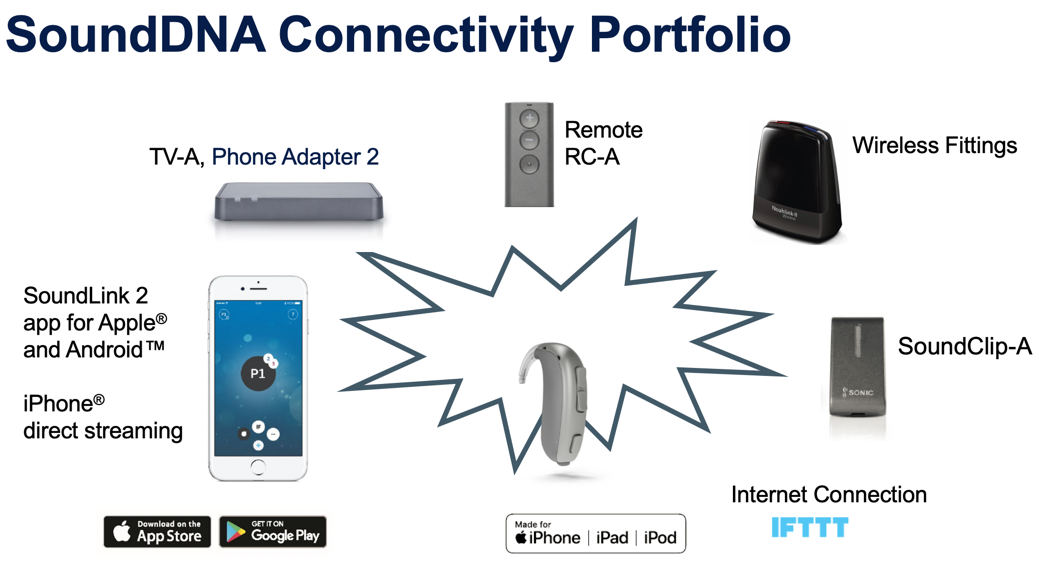
Figure 5. SoundDNA Connectivity Portfolio.
The TV Adapter (TV-A) will play TV audio directly to the hearing aids without an intermediary transmitter. Patients can enjoy high-quality digital sound stereo from their favorite shows, movies, and entertainment. It connects to most TVs and at-home pairing is simple and fast. We also have our RC-A remote control. This remote is small enough to fit in your pocket or purse and allows your patient to adjust volume, change programs and control connectivity sources like the TV-A. This is a great solution for people that aren't interested in a lot of Bluetooth connectivity. With the SoundClip-A, Trek hearing aids can also be used as wireless headphones for hands-free telephone calls. Pairing the SoundClip-A with the Phone Adapter 2 enables users to stream landline phone calls directly to their hearing aids, for users that still have a landline phone.
The SoundLink 2 app allows the user to control wireless options, like program and volume change. It is compatible with iPhone or Android smartphones and includes a lot of conveniences, such as Find My Hearing Aid, advanced Tinnitus SoundSupport controls, battery life indicators, among others.
Trek employs IFTTT ("if this, then that") technology, bringing the Internet of Things to Trek. Trek can connect with smart devices on the Internet of Things through the SoundLink 2 app and the IFTTT service. By doing so, Trek is able to synchronize events, such as turning on internet-connected lights with turning on the hearing aids in the morning. Or, text message alerts could be sent to the user if the hearing aid battery is low. The possibilities are endless. If you feel a bit nervous or unsure of this technology, I would recommend getting some instruments and creating an account on IFTTT to become comfortable with it. Embrace this technology, because people are really taking advantage of it.
Deep bass dynamics is our Low Frequency Enhancement which gives a boost to those low frequency signals. This is important for audio streaming for a high fidelity signal, to give it that natural sound quality. With Low Frequency Enhancement, we are going to improve the deep bass dynamic for your patient while they stream audio from their favorite devices by adding impact to music, movies, and entertainment. It's on by default in all Trek models and all technology levels.
Simple essentials that are available in Trek include Binaural Coordination which, as stated earlier, gets two ears working as one by sharing information between the two ears. Additionally, with binaural synchronization, adjustments made on one device are simultaneously made to the other instrument. Finally, we offer our non-telephone ear control, which reduces gain or mutes the input on the opposite device that someone is using a telephone on. It also reduces distractions caused by non-telephone sounds and increases the user's perception of volume for the telephone.
Trek offers different LED light and sound indicators to help visually show and confirm the hearing aid status. You can select and personalize the indicators by frequency, level, and cycle to match patient and/or caregiver preferences. There is a microphone service check, which is a great tool. The LED will show four red long blinks repeating four times with small pauses in between, and the audible indicator that occurs is eight beeps and it will repeat four times. If that ever happens, you want to make sure you send that instrument in for service because that means something is wrong.
Patients with severe to profound hearing loss typically use their hearing aids more often and longer than the average user with a milder loss. They need to be confident in knowing that their instrument offers robust protection against dust and water as they go about their lives. Our Ultra Power and Super Power instruments with Trek offer an IP68, which is considered dust-tight and protection against continuous immersion in three feet of water or more. While our hearing instruments are not considered "waterproof", if your patient accidentally jumps in the lake wearing their hearing instruments, the hearing instruments can handle that type of brief exposure.
EXPRESSfit Pro is a software that makes sense, is easy to use and highly intuitive. We offer several different fitting rationales. The default with this Super Power and Ultra Power fitting is DSL 5, but we do also offer NAL-NL 1, NAL-NL 2, our proprietary algorithms, Best Fit Fast and Best Fit Fast SE. Also available in this software is the Adaptation Manager, Data Logging, Transfer Fitting, and Real Ear Fit, which is a great system for anyone who's using IMC2 to communicate. Noahlink Wireless was on our previous connectivity portfolio, and it is the best in class when it comes to wireless programming. We do offer SoundStudio for people that have a sound system set up in their office. If you have a great speaker array, SoundStudio is fantastic.
Style That Stands Out
Trek is stylish by design, with two models and up to six colors to choose from (beige, brown, gray, black, red and blue). Trek can be configured to appeal to severe to profound hearing loss patients. All Trek devices include the standard dual-radio system, wireless technology and are equipped with the telecoil and have IP ratings of 68. When you take a look at our model overview (Figure 6), everything that you can imagine that you would desire in a Super Power and Ultra Power is configured here. Your Super Power will offer a size 13 battery, whereas the Ultra Power offers a size 675. Both models have a long battery life. Fusing form and function, Trek's Super Power and Ultra Power BTE's offer everything that you need for your severe to profound population.
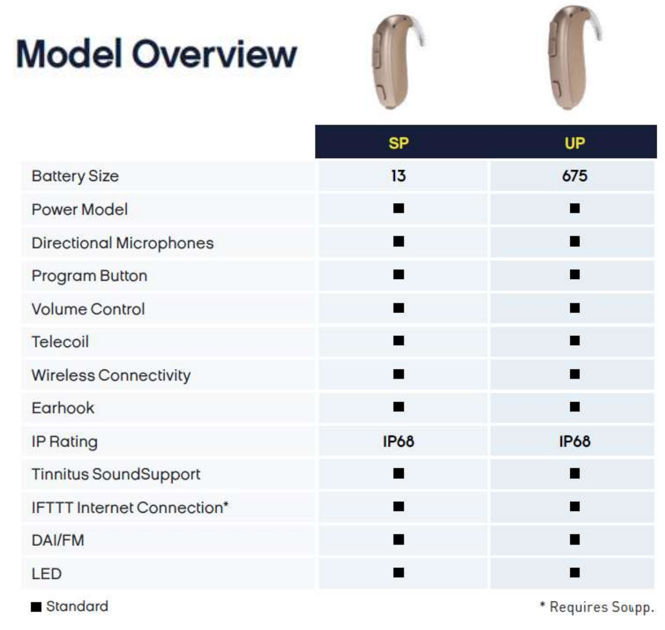
Figure 6. Trek model overview.
Pediatric Care Kit
We are offering the colors red and blue because we have an updated pediatric care kit available with a variety of different accessories for the caregiver as well as the child, including:
- Tote Bag (and markers for decorating)
- Drying and cleaning set
- Cleaning cloth
- Listening tube
- Hand puppet Lion
- Safety cord
- Care guide booklet with instructions for caregivers
Trek supports all wireless accessories available for the SoundDNA product families, including a new remote microphone called the EduMic, designed for use in modern classrooms. It offers a transmission range for classroom coverage, one-to-one communication, and has an incredibly long-lasting battery life to last an entire day at school. Trek works not only with EduMic, but Trek is also compatible with other FM systems and audio inputs for additional flexibility. If you are interested in EduMic, it is available with our sister company, Oticon.
In summary, with increased power and less audible feedback, we're helping patients hear the sounds they were previously unable to hear. Our patients are engaged in more conversations, connections, and experiences. With the advanced connectivity that Trek offers, combined with reliability and style, Trek gives users the confidence they need to experience more of everyday life. Thank you for your time and attention today. If you have any questions, give us a call at 888-423-7834, or email us at support@sonici.com. In addition, there is a wealth of information on our website (www.sonici.com).
Citation
Reichert, E. (2019). Trek - Experience More. AudiologyOnline, Article 26060. Retrieved from https://www.audiologyonline.com

